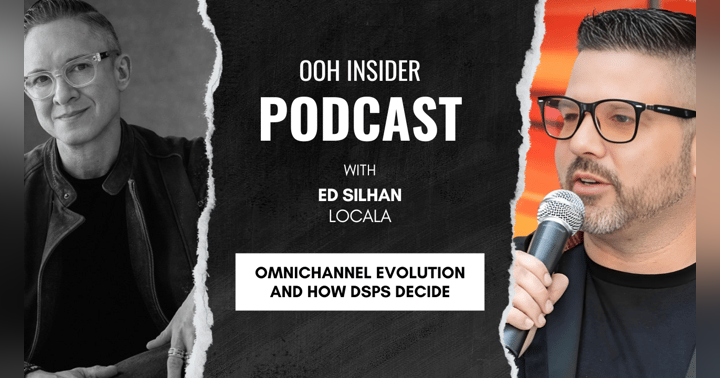Counting vs Attribution: Measuring the Effectiveness of OOH Advertising - Part 1

The measurement conversation gets confusing before it even gets started because the word, 'measurement' is really being used for two distinctly different concepts that both matter to marketers. So, that's why we're going to approach the topic of 'measurement' as a multi-part series.
- We'll explore the nuances of both 'Impression Counting' and 'Attribution Reporting' and how they must work in tandem to create a truly measurable medium.
- We'll go deep on translating digital marketing lingo to OOH (Out-of-Home) and vice versa.
- We'll break apart the full marketing funnel into its parts and look at each through the perspective of reaching customers in the real world in meaningful, measurable ways.
Impression Counting vs Attribution Reporting
In the context of OOH advertising, impression counting and attribution reporting can both be used to measure the effectiveness of an advertising campaign.
Impression counting in OOH advertising measures the viewability and reach of an ad, while attribution reporting tracks user behavior and links it to specific OOH ad placements to determine the effectiveness of an OOH advertising campaign.
Both metrics are useful for evaluating the impact of OOH advertising and can be used together to provide a more comprehensive understanding of the effectiveness of an OOH advertising campaign.
- Impression counting: In OOH advertising, impression counting refers to the number of times an ad is seen by people passing by the location where the ad is displayed. This metric is typically measured using traffic data, mobile data, or other types of footfall data. Impression counting is useful for evaluating the visibility and reach of an OOH advertising campaign, as it gives an indication of how many people are likely to have seen the ad. However, it doesn't provide information on whether the ad is driving conversions or sales.
- Attribution reporting: In OOH advertising, attribution reporting involves tracking user behavior and linking it to specific OOH ad placements. For example, a brand could use geolocation data to track how many people who saw the ad later visited the brand's physical POI objective, their website and took a key action, or even via app engagement. By analyzing this data, brands can gain insights into which OOH ad formats are most effective at driving key outcomes, optimize their strategy to these findings, and to understand the behaviors of people who saw the campaign vs those who didn't (and observe for differences between the two groups).
As we wrap up this first installment of our multi-part series, my hope is to have shed some light on the complexities of measuring the impact of Out-of-Home advertising. By exploring the nuances of impression counting and attribution reporting, our hope is to challenge the traditional ways of measuring the success of OOH advertising and equip you with new ways to help brands truly understand their audience's behavior and the ability of OOH to impact that.
In the upcoming installments of this series, we'll delve deeper into:
- Translating digital marketing lingo to marketing offline.
- Breaking apart the marketing funnel to inspect each stage and how OOH performs differently in each.
- And exploring how these metrics work together to create a measurable medium.
But before you go, I encourage you to apply the ideas you're taking with you today. Consider the effectiveness of your current OOH advertising campaigns and how you're measuring their impact. Are you relying solely on impression counting, or are you using attribution reporting to gain deeper insights into your audience's behavior? By incorporating these metrics and understanding their nuances, you can take your OOH advertising to the next level and reach your audience in more meaningful and measurable ways.
-TRowe


